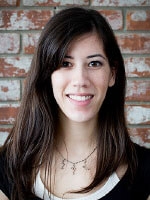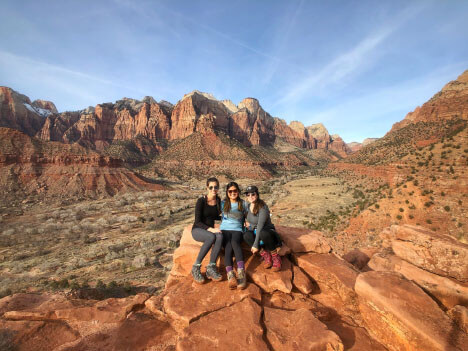Megan Ballweber, CRC Spotlight

May 27, 2022
Megan Ballweber, a Clinical Research Coordinator (CRC) in the UCSF Department of Radiology and Biomedical Imaging since 2015, comes to her role with a bachelor’s degree in human development from UC Davis and experience in pathology and Alzheimer’s research labs at the UC Davis Medical Center. Outside of work, Megan is an amateur mead brewer and mycologist, who loves to cook, dabble in nature photography, and enjoy outdoor adventures with family and friends.
Raised in Mountain View, California, Megan was a hospital volunteer in high school, an experience she credits with solidifying her interest in patient care. After receiving her associate degree from Foothill Community College in Los Altos, Ballweber transferred to UC Davis where, she focused her studies on science with an eye to exploring a range of scientific paths. Ballweber notes that an internship at the UC Davis Medical Center’s Child Life and Creative Arts department was a pivotal experience: “working with children who had debilitating or terminal illnesses was both fulfilling and inspirational.”
In her first job after college, Ballweber worked as a tissue coordinator in a pathology and research lab at the MIND institute. Her lab collaborated with the UC Davis Alzheimer’s Disease Center and the multi-center Alzheimer’s Disease Neuroimaging Initiative (ADNI) based at UCSF. In this role, Ballweber was motivated by contributing to research that, in the future, could help others with neurological disease. She notes that “this job was a great learning experience because it gave me the opportunity to learn about the technical aspects of research. One of my projects was working with the Sacramento County Coroner’s Office to collect and preserve human brain tissue samples and place them in paraffin for evaluation. UC Davis pathologists would use the tissue samples to identify a specific disease such as Lewy body dementia or frontotemporal dementia. Clinical teams had already conducted neurological testing for dementia while the patient was alive. The pathology reports prepared after death helped the patient’s family understand the particulars of the disease, providing additional information about the diagnosis of their loved ones.”
At UCSF, Ballweber works in the Vascular Imaging Research Center at the San Francisco Veteran’s Affairs Medical Center (SFVAMC). In this hospital-based position, Ballweber especially enjoys direct patient contact with veterans and her collaboration with clinicians and scientists. Studies performed at the center investigate blood flow and examine how it influences the progression of aneurysms – important work for determining risk of aortic rupture. Physicians referring patients to the center include radiologists, neurologists, neurosurgeons, cardiologists, and vascular surgeons.
On a daily basis, Ballweber’s work with patients and their clinicians is focused on gathering and analyzing data to better understand specific conditions: “If patients or doctors have questions, I am the go-to person for responding to their queries and getting the patients ready for the MRI studies.”
Ballweber observes that “the VA has a unique patient population. The veterans are great. They are very excited about our research and are always willing to put in the time and the effort to participate, even though it's not something that they necessarily enjoy. We get a lot of claustrophobic patients, for example, who don't want to go in the MRI because they don't like small spaces. But they try their best to participate and do what they can to help move the research along because they really want to help others.”
As a CRC, Ballweber’s administrative responsibilities include managing Institutional Review Board (IRB) approval for studies. The IRB is charged with oversight of all human research studies and is important to determining and reviewing study design and safety for any research involving patients. “Once studies are approved by the IRB, we can proceed with doing our research. This includes documentation and data management as well as providing those records to physicians and scientists, so they can review the images and provide perspective on the data.”
Ballweber has been able to collaborate with CRCs at other UCSF sites and describes a teamwork approach amongst the CRCs in the department: “For example, at Zuckerberg San Francisco General, I'm involved in a stroke study. I worked with some of the CRCs over at ZSFG in getting a feel for how they do things over there. I hadn’t participated in these particular studies previously and was not familiar with ZSFG. The CRCs there were more than happy to help and share their experience on what worked well, to share contacts, and to make themselves available for questions.”
Reflecting on the flexibility and collaborative nature of her work as a CRC, Ballweber notes that she is motivated by problem solving and constantly learning new things. “Everyone that I've worked with here, and Dr. David Saloner in particular, has asked what I want to get out of this work. They have encouraged me to gain new experiences and learn new skills. I never thought, for example, I'd be doing as much detailed data analysis as I have been doing.” COVID-19 restrictions have lifted again, and Ballweber is also working more with MRI and assisting with patient imaging on the SFVAMC’s 3-Tesla and 7-Tesla scanners.
Outside of work, Ballweber enjoys experiencing the outdoors with family and friends through activities such as hiking, backpacking, camping, and nature photography. She shares that she loves to get a rush of adrenaline: “I have gone skydiving twice and after the first jump decided I would love to get certified one day. Paragliding and scuba diving are also on my bucket list!” Ballweber loves to cook, and recently she has explored both mead making and mushroom cultivation: “You don't need much really to get started growing mushrooms. You can just use mason jars and a substrate which could be popcorn, for example. You have to keep everything as sterile and clean as you possibly can. And the spores, the mycelium are readily available. If you don’t want to put in a lot of work, they are available in kits. Just spritz and you have mushrooms growing in a couple of weeks. I've got some oyster mushrooms growing at home right now!”


